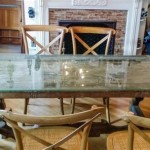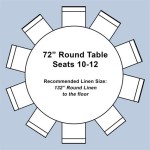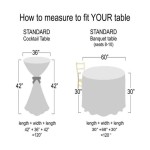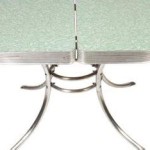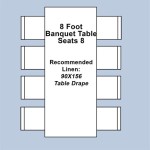Elevating Dining Room Aesthetics: The Art of Dining Room Table Vases
Dining room table vases are more than mere decorative objects; they are pivotal elements that can significantly enhance the aesthetic appeal of a dining space. They serve as focal points, introduce color and texture, and contribute to the overall ambiance, influencing how meals are enjoyed and memories are created. Selecting and styling vases effectively requires careful consideration of various factors, including the table's size and shape, the dining room's existing décor, and the desired mood or atmosphere.
The versatility of dining room table vases is considerable. They can be used to display fresh flowers, dried arrangements, artificial plants, or even stand alone as sculptural pieces. The choice of vase material, from classic glass and ceramic to contemporary metal and wood, further expands the possibilities for creating a personalized and visually compelling dining environment. This exploration will delve into the critical aspects of choosing, arranging, and maintaining dining room table vases to maximize their impact and ensure they complement the dining experience.
Understanding Vase Characteristics and Their Impact
The selection of a vase is a crucial first step in enhancing the dining room's aesthetic. Several key characteristics of vases influence their visual impact and suitability for a particular dining space. These factors include the vase's shape, size, material, and color. Each characteristic plays a distinct role in determining how the vase integrates with the surrounding décor and complements the floral or botanical arrangement it holds.
The shape of a vase can dramatically affect its overall appearance. Tall, slender vases are ideal for showcasing long-stemmed flowers like lilies or gladioli, while wider, round vases are better suited for displaying fuller blooms such as roses or peonies. The shape should also consider the table's dimensions; a very tall vase on a small round table may overwhelm the space, while a squat, wide vase on a long rectangular table might appear disproportionately small. Consider geometric shapes; square or rectangular vases can lend a modern, architectural feel, while curved or organic shapes can soften the space and create a more relaxed atmosphere.
The size of the vase is directly proportional to its impact. A large vase can serve as a dramatic centerpiece, commanding attention and establishing a strong focal point. However, it is essential to ensure that the vase does not obstruct views across the table, hindering conversation and creating an uncomfortable dining experience. Smaller vases, conversely, can be grouped together to create visual interest without dominating the space. These can be strategically placed along the table's length or clustered in the center, depending on the desired effect.
The material of a vase contributes significantly to its texture and overall aesthetic. Glass vases are a classic choice, offering transparency that allows the stems and water to be visible, creating a sense of freshness and purity. Ceramic vases provide a more opaque and substantial feel, often available in a wide range of colors and finishes. Metal vases can add a touch of modern elegance, while wooden vases can introduce a rustic or natural element. The material should complement the other elements in the dining room, such as the table's finish, chairs, and lighting fixtures.
The color of a vase is another critical consideration. Neutral-toned vases, such as white, cream, or gray, are versatile and can blend seamlessly with any décor. They also allow the colors of the flowers to take center stage. Boldly colored vases can add a pop of vibrancy and personality to the dining room, but it is important to ensure that the color harmonizes with the existing color scheme. Consider using complementary colors to create visual interest or analogous colors to create a more cohesive and harmonious look.
Arrangement Techniques: Balancing Form and Function
The art of arranging flowers in a dining room table vase is a skill that combines creativity with a practical understanding of floral design principles. An effective arrangement not only enhances the aesthetics of the dining room but also complements the dining experience, creating a welcoming and inviting atmosphere. Several key techniques can be employed to achieve a balanced and visually appealing arrangement.
Understanding the principles of floral design, such as balance, proportion, rhythm, and harmony, is essential for creating a successful arrangement. Balance refers to the visual weight of the arrangement; it should appear stable and symmetrical or asymmetrical but visually balanced. Proportion refers to the relationship between the size of the flowers and the size of the vase; the arrangement should be proportionate to the vase and the table. Rhythm refers to the visual flow of the arrangement, creating a sense of movement and interest. Harmony refers to the overall coherence of the arrangement, ensuring that the colors, textures, and shapes work together to create a unified and pleasing aesthetic.
Consider the height and spread of the arrangement in relation to the dining table. A tall arrangement can add drama and elegance, but it is important to ensure that it does not obstruct views across the table. A general guideline is to keep the arrangement below eye level when seated, typically around 12-14 inches above the table's surface. The spread of the arrangement should also be proportionate to the table's size; a wide arrangement on a narrow table may appear overwhelming, while a narrow arrangement on a wide table may appear insignificant.
The choice of flowers and foliage is crucial for creating a visually appealing arrangement. Consider the color palette of the dining room and select flowers that complement or contrast with the existing décor. Use a variety of flower types, shapes, and textures to create visual interest. Foliage can add depth and texture to the arrangement, filling in gaps and creating a more natural look. Consider using seasonal flowers to reflect the changing seasons and bring a touch of nature indoors.
The technique of flower placement is also important. Start with the larger, focal flowers and then fill in with smaller blooms and foliage. Use floral foam or a floral frog to help secure the flowers in place and create the desired shape. Consider the angle and direction of each stem, ensuring that the arrangement has a balanced and natural look. Pruning and grooming the flowers and foliage is also important; remove any dead or damaged leaves and stems to ensure that the arrangement looks its best.
Beyond fresh flowers, other materials can be incorporated into vase arrangements. Dried flowers and branches offer a long-lasting, textural element, especially suitable for autumnal or winter decor. Greenery, such as eucalyptus or ferns, can add a year-round touch of freshness. Even inanimate objects, like decorative stones or glass beads, can be used to fill the base of the vase and add visual interest.
Maintaining Vase Arrangements for Longevity and Visual Appeal
Proper maintenance is essential for ensuring the longevity and visual appeal of dining room table vase arrangements. Regular care not only extends the life of fresh flowers but also prevents the buildup of bacteria and algae, which can cloud the water and shorten the lifespan of the arrangement. Implementing a few simple practices can significantly improve the overall health and appearance of the arrangement.
Regular water changes are paramount for maintaining the freshness of the flowers. The water should be changed every one to two days, depending on the type of flowers and the environmental conditions. When changing the water, it is important to thoroughly clean the vase to remove any bacteria or algae. A mild solution of bleach and water can be used to disinfect the vase, followed by a thorough rinsing. Fresh, clean water helps to keep the flowers hydrated and prevents the buildup of harmful microorganisms.
Trimming the stems of the flowers is another important maintenance practice. When the flowers are first arranged, the stems should be cut at a 45-degree angle to allow for maximum water absorption. Subsequently, the stems should be re-cut every one to two days when the water is changed. This helps to remove any bacteria or air bubbles that may have formed on the cut ends, ensuring that the flowers can continue to absorb water efficiently. Removing any leaves that fall below the waterline is also important, as these leaves can rot and contaminate the water.
The location of the vase can also affect its longevity. Avoid placing the vase in direct sunlight or near sources of heat, as this can cause the flowers to wilt and fade more quickly. Cool temperatures and indirect light are ideal for preserving the freshness of the flowers. Additionally, avoid placing the vase near ripening fruits, as the ethylene gas emitted by fruits can accelerate the wilting process. Rotating the vase regularly can also help to ensure that all sides of the arrangement receive equal light exposure.
Certain additives can be used to prolong the life of fresh flowers. Floral preservatives, available at most florists and garden centers, contain a combination of nutrients, biocides, and acidifiers that help to nourish the flowers, prevent bacterial growth, and maintain the water's pH balance. Aspirin, sugar, and vinegar are other common household ingredients that are often added to vase water to help prolong the life of the flowers. Each of these additives has a slightly different effect, but all aim to create a more favorable environment for the flowers to thrive.
Beyond fresh flowers, maintaining dried arrangements is equally important. Regular dusting prevents the accumulation of dust and debris, which can dull the arrangement's appearance. A soft-bristled brush or a can of compressed air can be used to gently remove dust from the flowers and foliage. Avoid placing dried arrangements in humid environments, as this can cause them to become moldy or brittle. With proper care, dried arrangements can last for several months or even years, providing long-lasting beauty to the dining room.

20 Nature Inspired Centerpiece To Boost Up Your Table Tops Home Design Lover Dining Room Centerpieces Vases Decor

Uniquewise Timeless Flower Inspired Ceramic Vase Unique White 7 In Dia Round Table Decor For Entryway Dining Room Living Qi004035 The Home Depot

Dining Room Table Centerpieces

Dining Room Trio In Boston Ma Winston Flowers

Table With Chairs And Vases In Dining Room Stock Photo By Pro Creator

Beautiful And Easy Dining Room Table Centerpiece Ideas Stonegable

Favorite Vases Vessels Stems Styling Tips Zdesign At Home

A Simple Neutral And Natural Centerpiece Tips For Dining Room Table Centerpieces

85 Best Dining Room Decorating Ideas Country Decor

Ceramic Vase Modern Minimalist Center Pieces Flower Scandinavian Rustic Displays Dining Table Minimal Centerpiece Ceramics Vases

